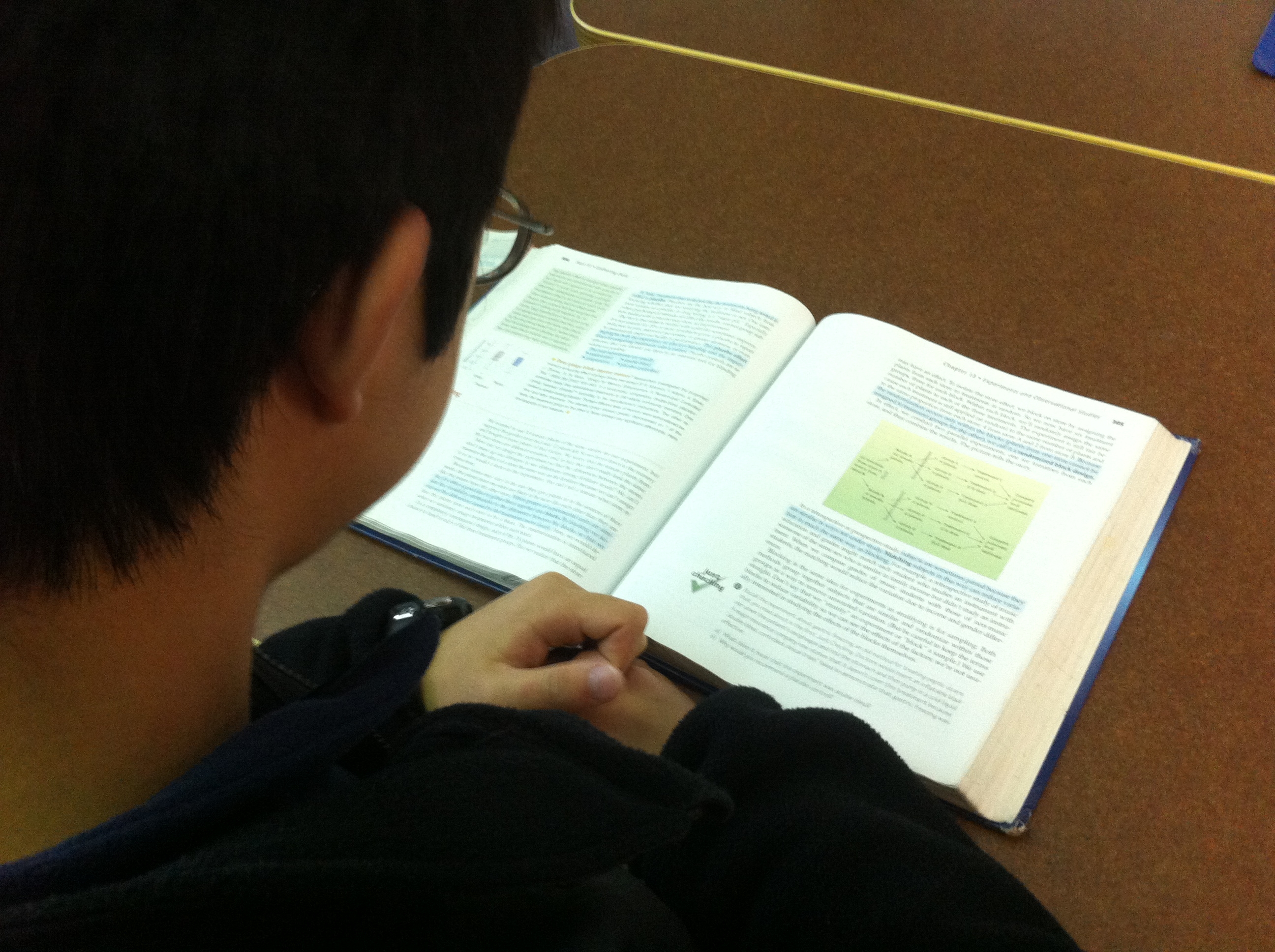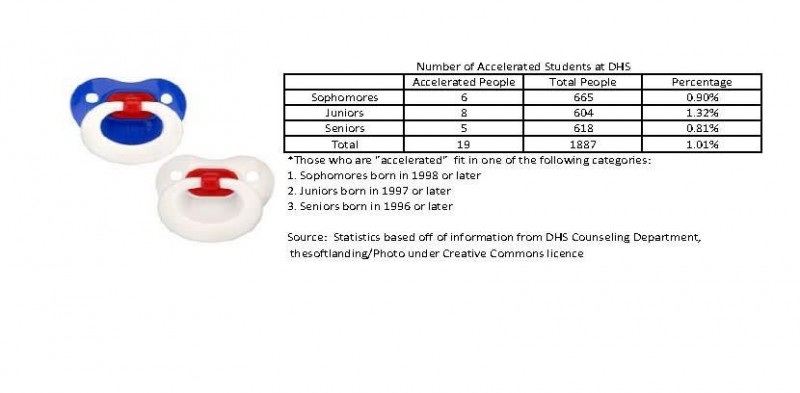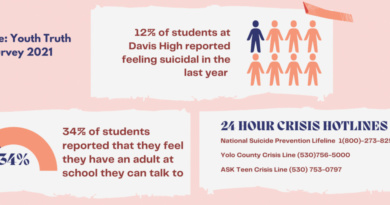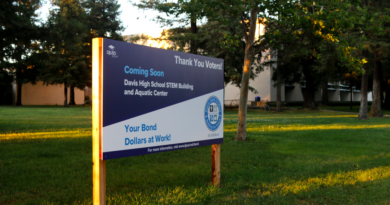DIVERSITY: Grade accelerated students blend into the crowd
Thirteen-year-old Timothy Nguyen walks through the halls of Davis High to get to his chemistry class. Standing at 5 feet 3 inches, it’s easy to mistake him for a junior high split-site student. However, Nguyen is not a lost seventh grader; he is a sophomore at Davis High, and there are quite a few just like him.
Among the 1,887 students attending Davis High, a small handful of them are younger, or accelerated, compared to their average grade level peers. According to the counseling department, there are 19 accelerated students at Davis High including some who are grade accelerated. While many of these grade accelerated students are successful, a variety of factors weigh in on the student’s potential to thrive in an accelerated learning environment.
One factor is a student’s emotional skills. When a student is accelerated, his emotional development is still of his own age rather than his peers, according to developmental psychologist Marilyn Price-Mitchell.
However, an accelerated environment can be a better fit for some students, according to Price-Mitchell. “Sometimes bright kids adjust well because they are happier in a more academic challenging environment,” Price-Mitchell said.
Another factor is the student’s social ability. The decision to go through grade acceleration “needs to be the result of a careful and thoughtful consideration” of a student’s social strengths and weaknesses, according to Maureen Marron, an associate research scientist at the Institute for Research and Policy on Acceleration at the Belin-Blank Center for Gifted Education and Talent Development.
Nguyen, who skipped sixth grade because of the lack of space in fifth grade, walked into his first class of seventh grade and was treated like the “new kid” after transferring from a private school. Things couldn’t have gotten worse when Nguyen’s mom walked into the room to check up on her accelerated son saying to the teacher, “Hi Mr. Howie!”
“Mom, it’s Mr. Howe,” Nguyen quickly said. “I was pretty embarrassed,” he later said.
At first, Nguyen felt socially out of place in seventh grade. “I was like really short, and it just felt really weird because they were older people and I was like, ‘Hey guys, how are you guys doing? Yeah, I’m like 10 years old,’” he said. However, Nguyen socialized with his table group and made new friends on the first day.
Another factor that influences the student’s potential in an academically advanced environment is the student’s support system.
“There needs to be an openness (among administrators, teachers, parents, the community) to accepting academic readiness,” Marron said. “It helps to have an advocate to make sure that there is an awareness of the needs of high-ability learners.”
The final aspect influencing students’ potential is their academic capabilities and readiness.
For junior Brandon Lin, who is one of eight accelerated students in the Class of 2014, this was not a problem.
Lin, who is now enrolled in an AP Statistics course, skipped most of fifth grade after his teacher noticed he was an advanced mathematician compared to his peers. “I thought that it was the best option,” Lin said.
In fact, holding Lin on a tight leash may have had negative consequences, according to Delaine Eastin, former California Superintendent of Public Instruction.
“Students who are moving ahead faster intellectually can lose interest when they are asked to slow down for their team of cohorts,” Eastin said. More students give up on education due to boredom rather than the inability to grasp the material, according to Eastin. “Many believe that keeping students challenged is a key that unlocks the door of great achievement.”
However, grade acceleration is a decision that may not be the path for everyone. “It all depends on the individual, their ability to cope and their skills at adapting to change. There is no one answer that fits all kids,” Price-Mitchell said.






I don’t really understand how this is “Unequal lives”. The kids are smarter than the others in their grade so they choose to get promoted to a higher grade. Nguyen said that he had friends on the first day even though he was younger. It doesn’t appear that there is any inequality whatsoever. The kids choose to go to a higher grade to find their academics more challenging and they make friends regardless… They are fine and always were fine. People need to stop devaluing the word “unequal” and save it for times when there is actual inequality.
Thank you for expressing your concern regarding our “Unequal Lives” series. We intended for the word “unequal” to mean a deviation from the typical life of a high school student, but recognize that the meaning could be misconstrued. In response to your comment, we have changed the series to “Diversity” in order to represent the variety of students we have here at Davis High. Please look forward to the upcoming articles in the series, and thank you for your input.